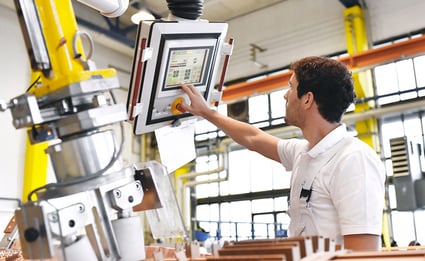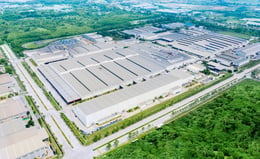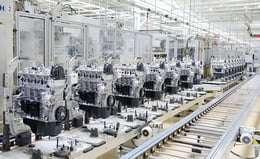Digitalization Can Take the Guesswork Out of Planned Maintenance
Nancy Sarpolis - December 21, 2021

What’s the best time to perform preventive maintenance in a manufacturing facility? With digitalization, finding the answer could be easier than you think.
Planned maintenance (PM) schedules are a lifeline for manufacturing facilities of all sizes. Performing preventive tasks on a regular basis such as checking wiring harnesses, cleaning gears, swapping out worn gaskets or replacing dull dies can extend the service life of equipment and keep it working at its optimal level for many years. But performing PMs always seems to come at the wrong time: A major customer needs a big order on a compressed timeframe. The plant is building a bank of products in anticipation of peak season demand. Prototypes need to be run to stay on schedule for an important new product launch.
Digitalization can take the guesswork out of identifying the optimal time to perform equipment maintenance while maintaining production schedules. It puts data and analytics in maintenance supervisors’ hands for better planning, fewer surprises and smoother production schedules.
Digitalization tools can help maintenance managers:
1. Gain visibility by connecting data
Machine sensors, Andon systems and other in-plant data sources provide an array of ongoing information that could provide maintenance managers with valuable insights—if they were connected. Digitalization tools can gather data from disparate sources and put it in one place and in a consistent format for easier analysis. With greater visibility into real-time data, maintenance managers have the insights they need for better decision-making and shorter downtime.
2. Look for patterns to predict potential breakdowns
With digitalization and AI tools, data showing machine run times, down times, etc. can be collected and analyzed for patterns. The predictive algorithms take in live production data from the plant floor and over time, can correlate specific factors for root cause analysis of recurrent downtime issues—factors that would be virtually impossible for a human planner to identify without AI assistance. These insights can be used to analyze equipment performance and provide an early warning of impending breakdowns.
3. Optimize the PM schedule
Unexpected machine idle time due to breakdowns or unplanned maintenance is a costly fact of life for most manufacturing businesses, with increased unit costs, premium freight to meet delivery deadlines and potential for lost business. But with digitalization and AI tools, maintenance managers can compare their PM schedules to actual performance and optimize their PM schedules accordingly. Digitalization tools can also work seamlessly works with production planning to flex production to other lines (or even facilities) to accommodate machine downtime.
4. Prepare for predictive maintenance
For next-level forecasting and insight, choose digital solutions that have the ability to integrate PM or AI modules for predictive maintenance. This makes it possible to know when breakdowns are coming in advance and to take proactive measures to reduce unplanned downtime. With these modules, it’s easy to pinpoint the least disruptive moment to perform equipment maintenance and schedule accordingly, resulting in fewer supply chain disruptions.
Effective PM programs can help maintenance managers extend the life of equipment and machinery. But maintenance operations that use digital tools can do so much more. They can proactively prevent breakdowns, plan real-time maintenance schedules based on data and analytics and keep costs in line—all while maintaining production schedules. As demands increase on today’s increasingly complex supply chains, digitalization tools can help maintenance managers become part of the solution.
If you want to learn more get your Guide to Transformation of Manufacturing Processes
In this Guide you will learn:
-
Emerging challenges in the modern automotive industry
-
How global OEMs can adapt to new realities
-
How decentralized digital systems power smarter planning processes
-
How flexis can support flexible supply chain transformation
LATEST POSTS
- Understand Why Production Planning Needs Specialized Solutions
- Understand Circular Economy in The Manufacturing Industry
- How Can Industry 4.0 IT Integration Be Achieved Smoothly?
- The Significance of Order Sequencing in Discrete Manufacturing
- How to improve your Supply Chain Management: The Power of Control Towers



